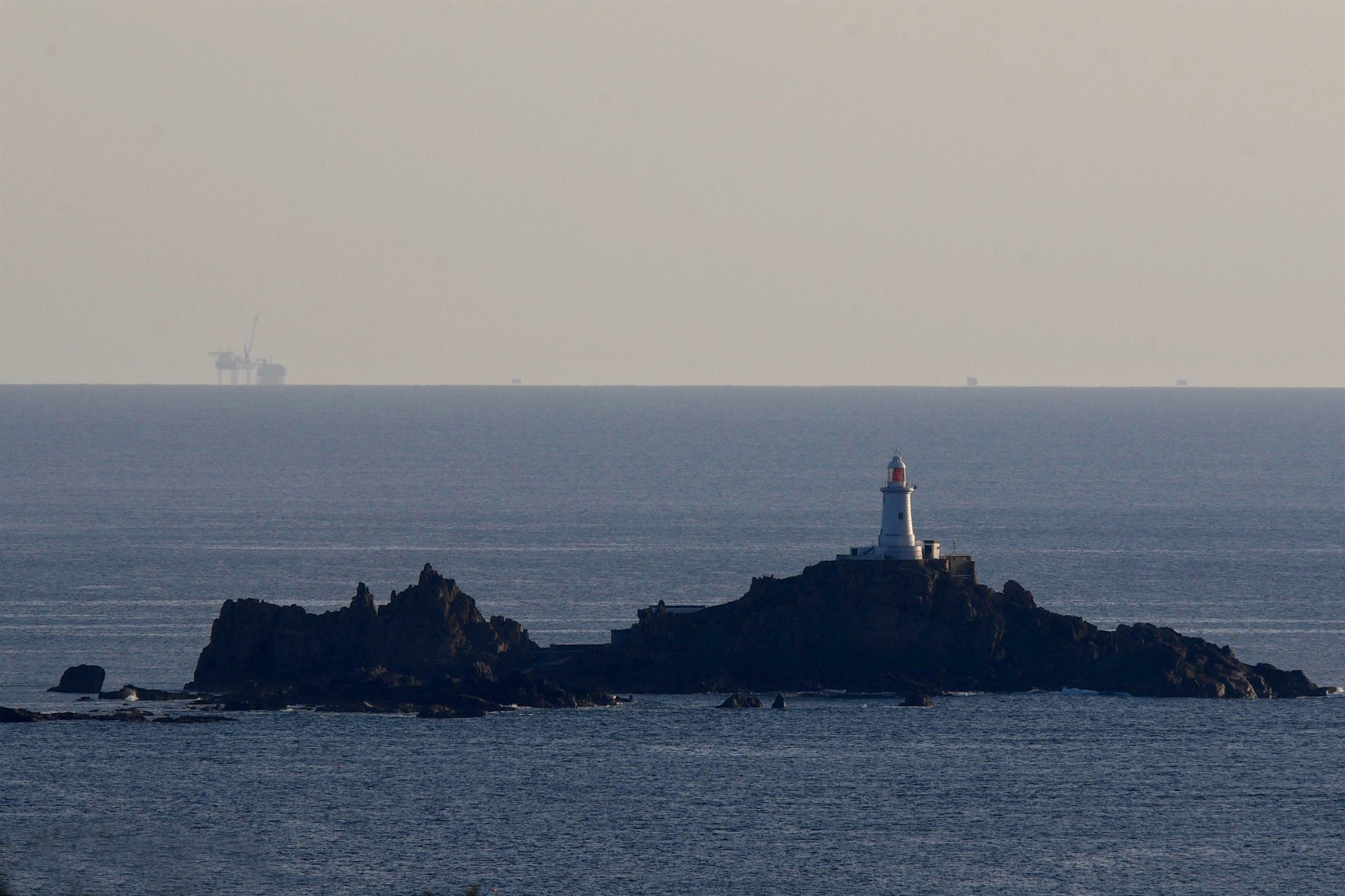In the final article of a three-part series looking at renewable energy sources, JEP reporter Tom Innes talks to environmentalist Nigel Jones about the benefits of an offshore wind farm, while Chris Ambler discusses the potential of tidal and solar power
ENVIRONMENTAL concerns arising from any future project to build a wind farm off the coast of Jersey are likely to be outweighed by ‘infinitely worse’ alternative sources of energy, a leading campaigner has said.
With positive support within the Bridging Island Plan, and backing from Jersey Electricity, the concept of an offshore wind facility appears to be gaining momentum, especially with a new French project in the Bay of St Brieuc nearing completion.
Nigel Jones, founder of environmental group Jersey in Transition, said he was supportive of moves to explore the viability of a Jersey wind farm, in spite of the impact.
Concerns have been raised over the impact of wind farms on wildlife. NatureScot – the public body responsible for Scotland’s natural heritage – has said risks posed to birds include death by colliding with turbine blades and displacement ‘through indirect loss of habitat if disturbance causes birds to avoid the wind farm and surrounds’. However, it added that well-sited wind farms had ‘limited effects on birds’.
Mr Jones said: ‘There is a carbon footprint and a biodiversity footprint from a project like this, but while we are dependent on electricity we have to compare the footprints with the alternatives.
‘Nuclear power is risky and produces hazardous waste, while coal, oil and gas are infinitely worse, so wind is probably the “least bad” and I am all for it in that respect.’
With estimates that a project on the same scale as the St Brieuc scheme could generate up to four times as much electricity as required by the Island, Mr Jones foresaw a promising business opportunity.
He said: ‘I see no reason why we shouldn’t enter into a profitable operation – when the wind is blowing, we could be a big exporter and that would make for a sound business proposition.
‘There are plenty of businesses who could be partners, and plenty of [investment] capital around, a lot of it potentially coming through Jersey anyway, and I would have thought our business brains could come up with viable scheme.’
Mr Jones said the idea of Jersey having greater energy security than the present reliance on imported electricity from France was another attractive aspect of the concept, although he warned that it would be necessary to continue fighting climate change on a range of fronts. During the fishing dispute last year over post-Brexit access to Jersey’s waters, senior French politicians suggested that the country could cut off Jersey’s connection over the row.
Mr Jones said: ‘There’s not much to gain in terms of Jersey’s collective carbon footprint – the energy we import from France is already relatively low-carbon.
‘Having a wind farm wouldn’t mean everyone could just carry on driving their cars without worrying about the impact.’
Other renewable sources of energy are on Jersey’s radar, but for the time being wind appears to be the most viable option, and is the one in sharpest focus for both Jersey Electricity and new Environment Minister Jonathan Renouf.
Chris Ambler, chief executive of Jersey Electricity, said that wind was ‘by far the biggest opportunity’, but that other ideas were also being looked at.
He said: ‘Tidal power is interesting, although it’s at a very early stage and the likely price of what would be produced would be much higher.
‘But we do have the right resources for tidal power in Jersey waters, and we’ll be keeping a close eye on studies about how the idea could be developed.’
Despite the technology still being at an early stage, the recently approved Bridging Island Plan stated that energy generation from a ‘tidal lagoon’ could be feasible in Jersey’s waters, ‘and could provide a long-term source of local renewable [energy], contributing to energy security and resilience as well as climate change mitigation’.
It added: ‘A tidal lagoon would represent utility-scale renewable energy generation that could ensure Jersey has a more reliable energy supply, is more resilient to market shocks, and with the potential to make revenue from exporting energy.
‘Tidal lagoon development opportunities can be co-located with other uses in the marine area, including with aquaculture and leisure, and integrate with local regeneration.’
In July, Deputy Renouf said there was ‘a significant opportunity’ to generate electricity through wind, tidal and wave-based technologies.
Mr Ambler said Jersey Electricity would continue working on solar energy, including both roof-based and ground-based panels, adding that he felt the Island would be well-served by having more installations of this type.
Jersey Electricity recently announced plans for the Island’s first ground-mounted solar farm in St Clement. Land south of Rue du Moulin à Vent has been earmarked as part of a wider scheme to develop ground-based solar projects on sites close to grid connections, and could be used to power an estimated 600 homes.
The utility company has already completed roof-based solar installations in several locations, including the power station, the Queen’s Road Solar Hub, Jersey Dairy and Woodside Farms.
A fifth is also being added to the roof of the Albert Bartlett potato-processing plant in St Helier.
The Bridging Island Plan said ‘opportunities’ existed for larger-scale renewable energy production on land, including solar technology, but that this was ‘unlikely to be implemented at a scale that could replace the Island’s existing primary source of energy supply’.
Solar power also forms one aspect of a drive by French president Emmanuel Macron to speed up the pace of his country’s renewable energy projects.
On a recent visit to an offshore wind farm at Saint-Nazaire, on the opposite side of the Brest peninsula to the St Brieuc site, President Macron said he wanted to encourage the installation of solar panels on agricultural land and use other potential sites such as car parks and the sides of motorways. But wind power has been President Macron’s primary focus, with his government setting an ambitious target of developing 50 offshore sites with a total capacity of 40 gigawatts by 2050, which would provide a fifth of France’s forecast power generation.
In order to achieve his goal, President Macron has introduced legislation aimed at streamlining the planning process. If passed, the new law would see disputes required to be settled by the courts within ten months, more online consultation and a higher threshold for projects requiring a full inquiry.
Some observers have expressed doubt that the president will get the backing he needs for his legislation, with his centrist coalition having lost its parliamentary majority and being forced to barter with opponents from both ends of the political spectrum. French progress on wind-generated power lags well behind the leading European players, notably the UK and Germany.
Orbital Marine Power’s O2 – the world’s most powerful tidal turbine – started generating power in Orkney last year. The floating machine is anchored in the Fall of Warness, where a sub-sea cable connects the offshore unit to the local electricity network.
The 74m-long turbine is expected to operate for the next 15 years, with the capacity to meet the annual electricity demand of around 2,000 UK homes using clean power generated from the fast-flowing waters.
Commenting in August last year, Jersey Electricity’s operations director Mark Preece said the company was monitoring the technology to see if it could eventually supplement the Island’s solar and low-carbon imported power supplies.
lSee pages 20 and 21 for more pictures on the construction of the St Brieuc offshore wind farm.






